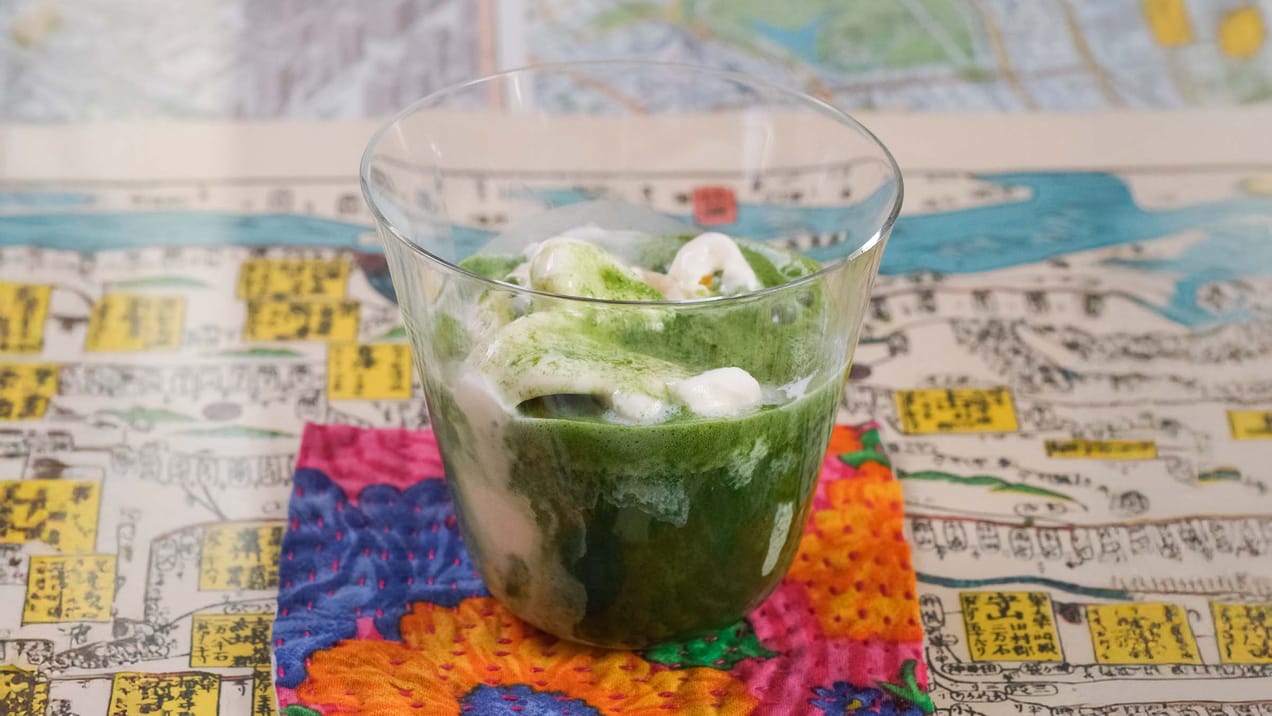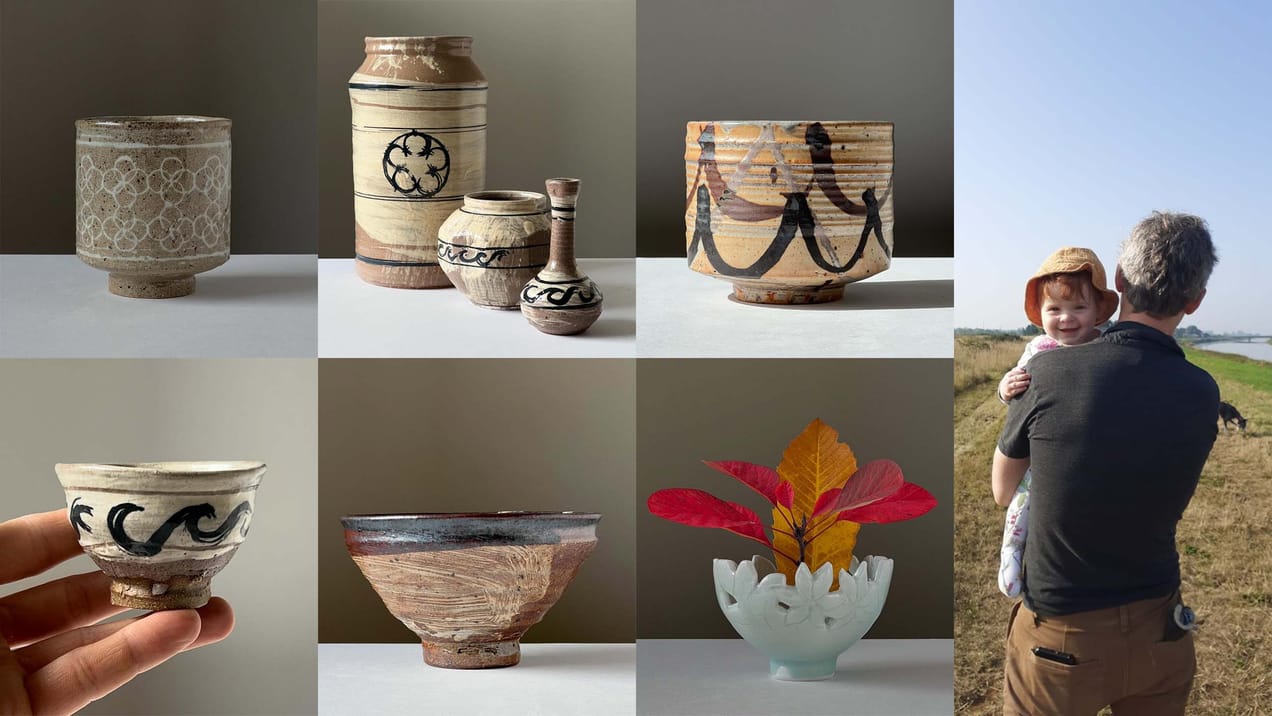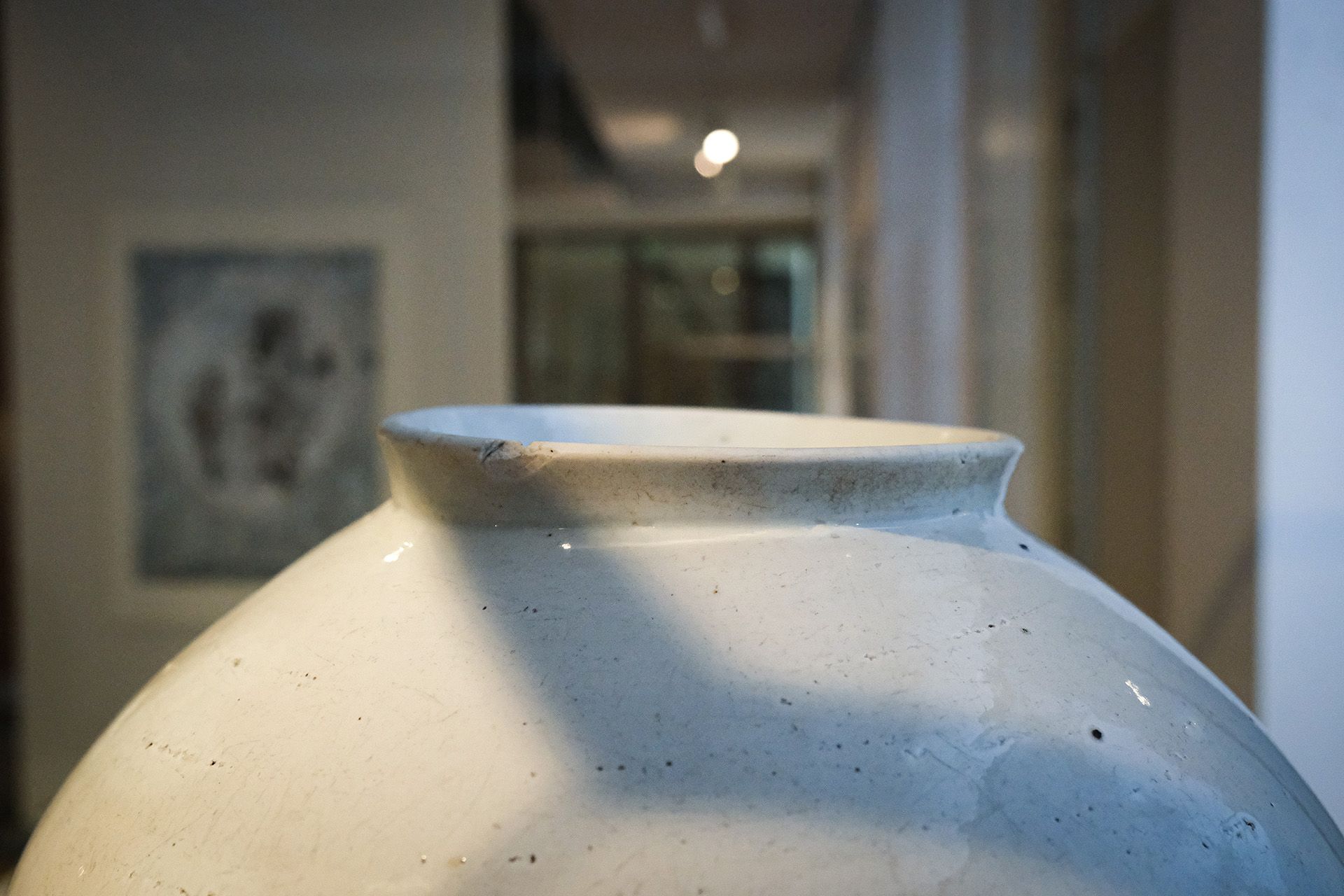
I fell down a moon jar rabbit hole
Moon jars are a classic Korean form usually made of milky white porcelain resembling a full moon floating over a rice field.
Earlier this year I fell down a moon jar rabbit hole. My interest in Korean ceramics had been growing over the years, at first as a way to better understand its Japanese counterpart, and later based on its own merit. While Japanese emperors, aristocrats and rulers like Toyotomi Hideshoshi had a penchant for karamono, elegant and luxurious tea wares and other objects originating in China, it was tea masters like Murata Jukō, Takeno Jōō, and Sen no Rikyū that recognised and elevated the simple beauty of more humble objects like Korean rice bowls. They gave birth to a style of tea ceremony called wabi-cha.
In the late 16th century, Hideshoshi was so obsessed with Korean wares (and with everything and anything related to the Tea Ceremony) that during successive invasions of Korea he ordered the kidnapping of many local craftspeople who were resettled in Japan. These forced relocations gave birth to a rich series of traditions that produced some of the country’s most regarded ceramics. Korean buncheong wares, stoneware vessels decorated with white slip, became a point of reference for Mingei, folk craft. Even the utmost exemplifier of Mingei as described by Sōetsu Yanagi (1889 – 1961) is the humble Korea-made Kizaemon Ido bowl (which is not Buncheong).
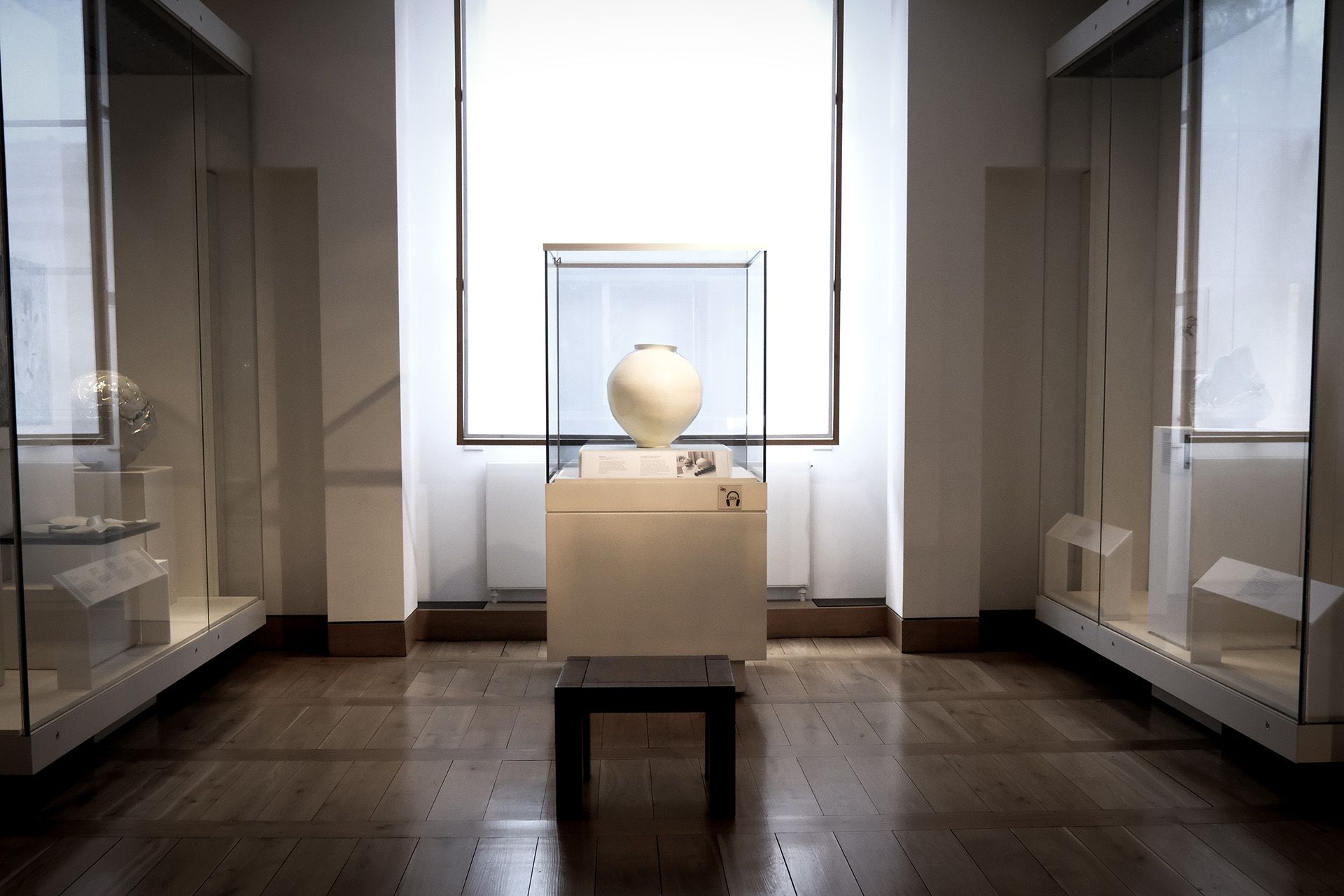
Moon jars are a classic Korean form usually made of milky white porcelain resembling a full moon floating over a rice field. They are made by merging two half domes, with a foot that is narrower than the mouth, giving the impression that they could topple down with just a little push. Its smooth curves make them a delight to hold. Their primordial function as a container for salt, soy sauce or fermented foods is still reflected in their shape, but it has since taken an ornamental role.
As it often happens, when you focus your attention on something you start to see that thing all over the place. A London gallery owner told me that moon jars were popular among millennials and Gen Z, a possible reason why I was suddenly coming across them everywhere. Maybe it's their minimalistic, hypnotic form that looks good on Instagram that makes them attractive to younger people, or maybe they’re an extension of the trailblazing K-wave that's permeating everything from music to film, food and cosmetics.
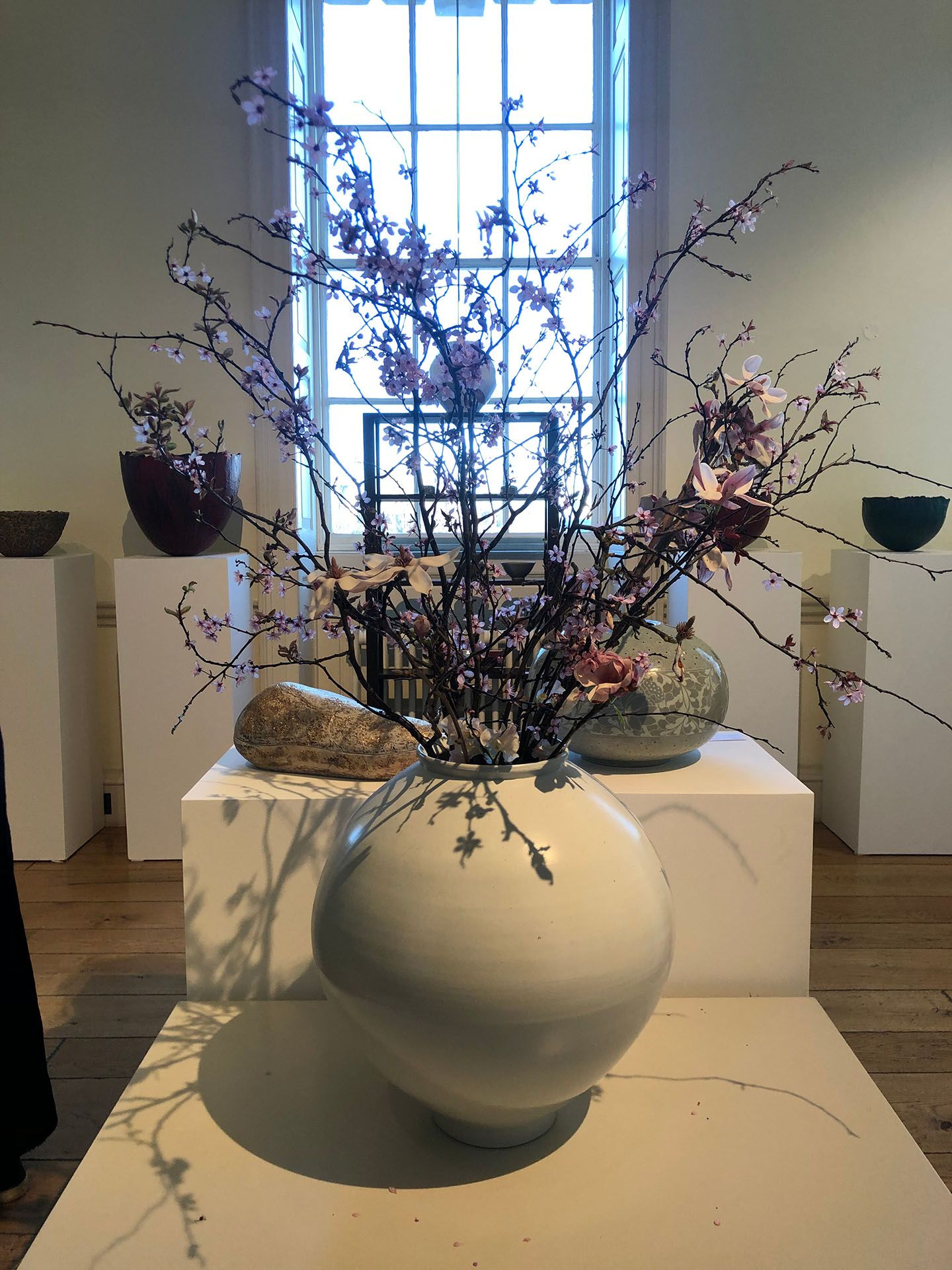
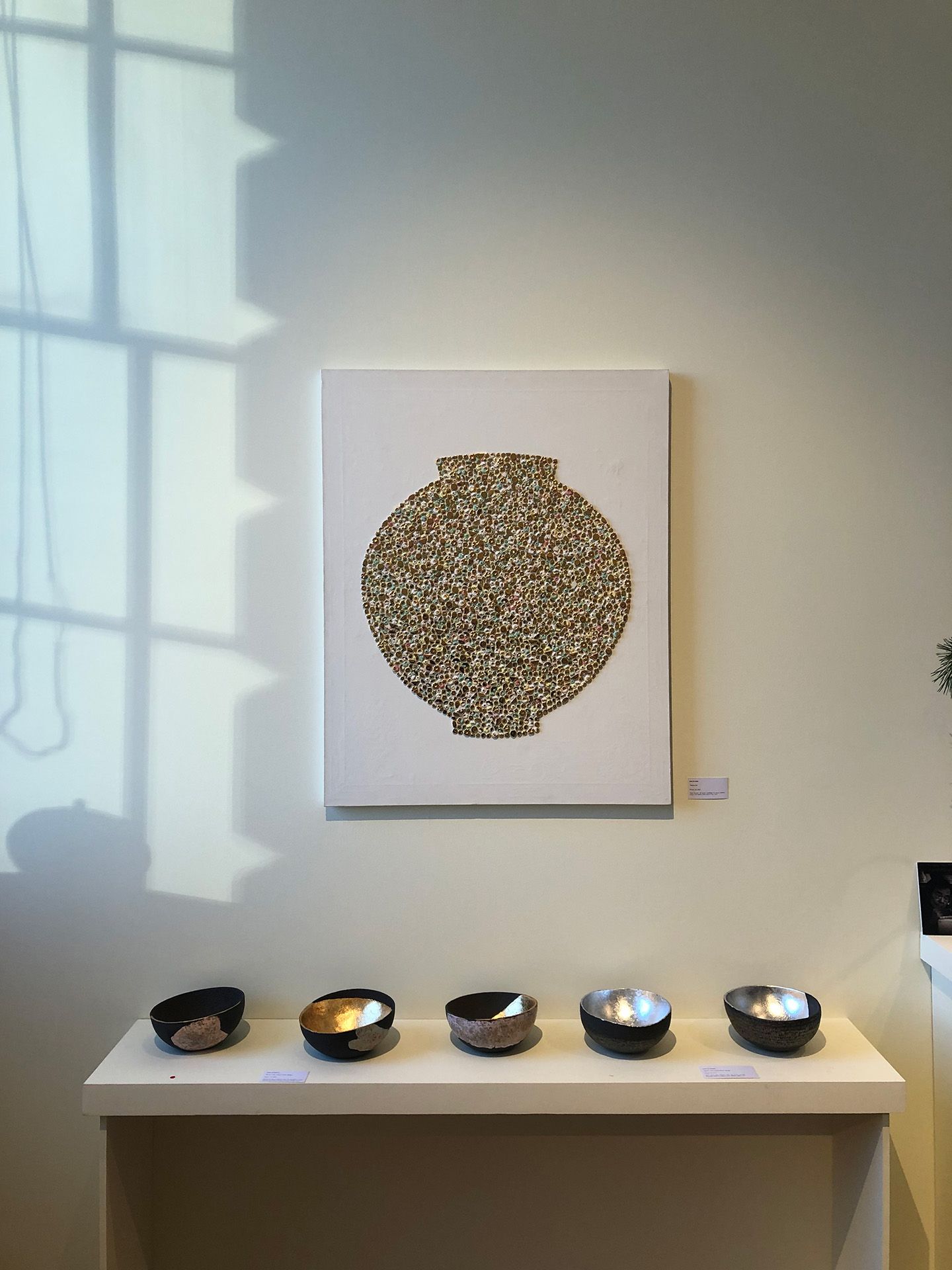
To learn more about moon jars, I visited places that have old and new versions. The British Museum's Korean collection (Room 67) is small compared to those dedicated to its Chinese collections, but nonetheless it leaves a mark. The muted luxury of celadon wares from the Goryeo period (918 - 1392 CE) and the disarming simplicity of buncheong wares from the Joseon period (1392 - 1897 CE) complement each other so well that it feels like one could not exist without the other. You can see why Yanagi and Bernard Leach (1887 – 1979) were obsessed with the work of Korean potters. One of the moon jars in the room was acquired by Leach during a visit to Korea and later given to Lucie Rie (1902 – 1995), who kept it until her death.
It was at the Han Collection gallery just outside the British Museum that I was able to appreciate moon jars up close. The owner, Jinsoo Park, and a regular visitor and collector, Peter the "Korean Ceramics Fan", helped me to better understand their form and history, and YouTube offered a deep dive into how they are made. I learned for example how a jar's sharp shoulder or a gentler slope identify them with a male or female character respectively.
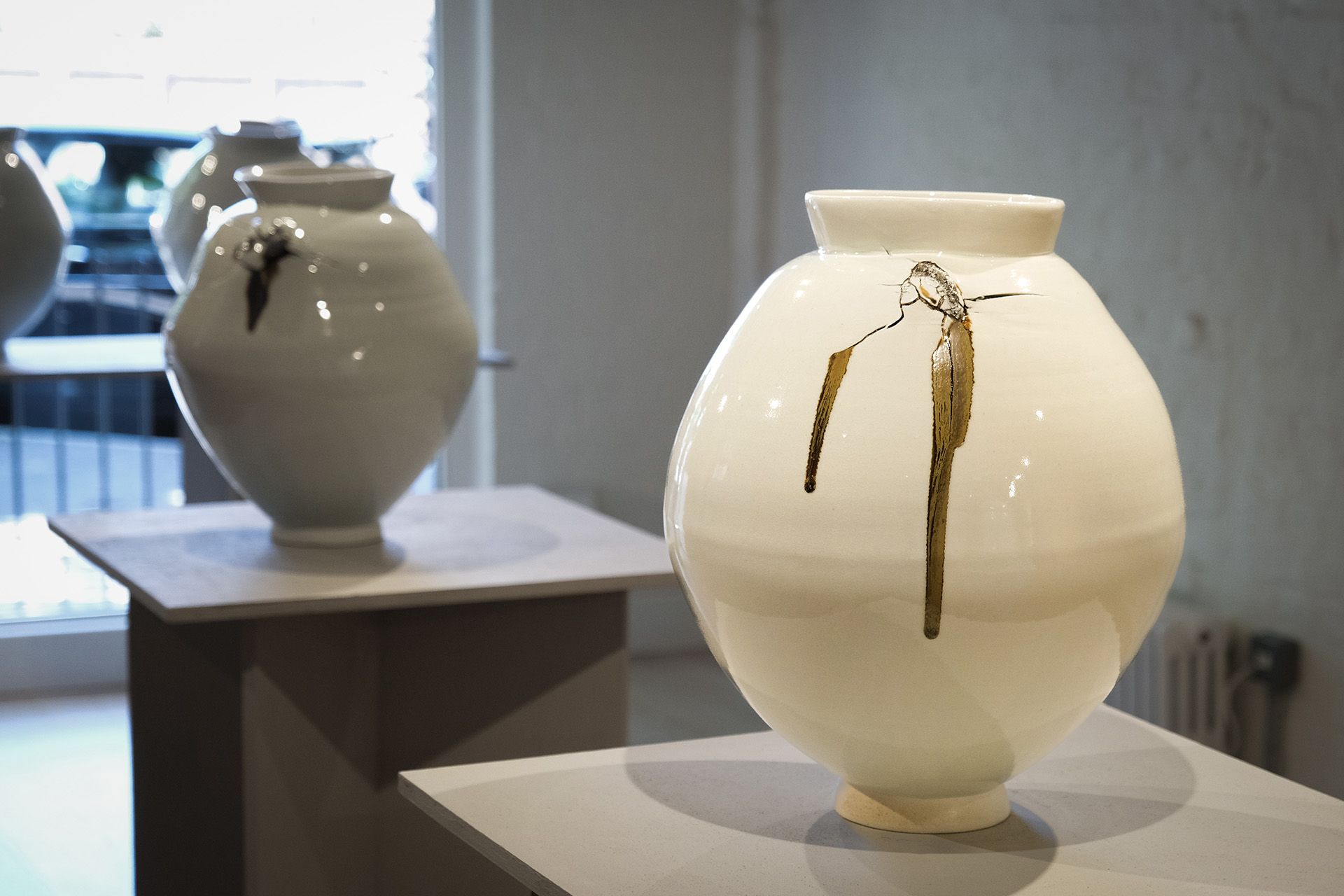
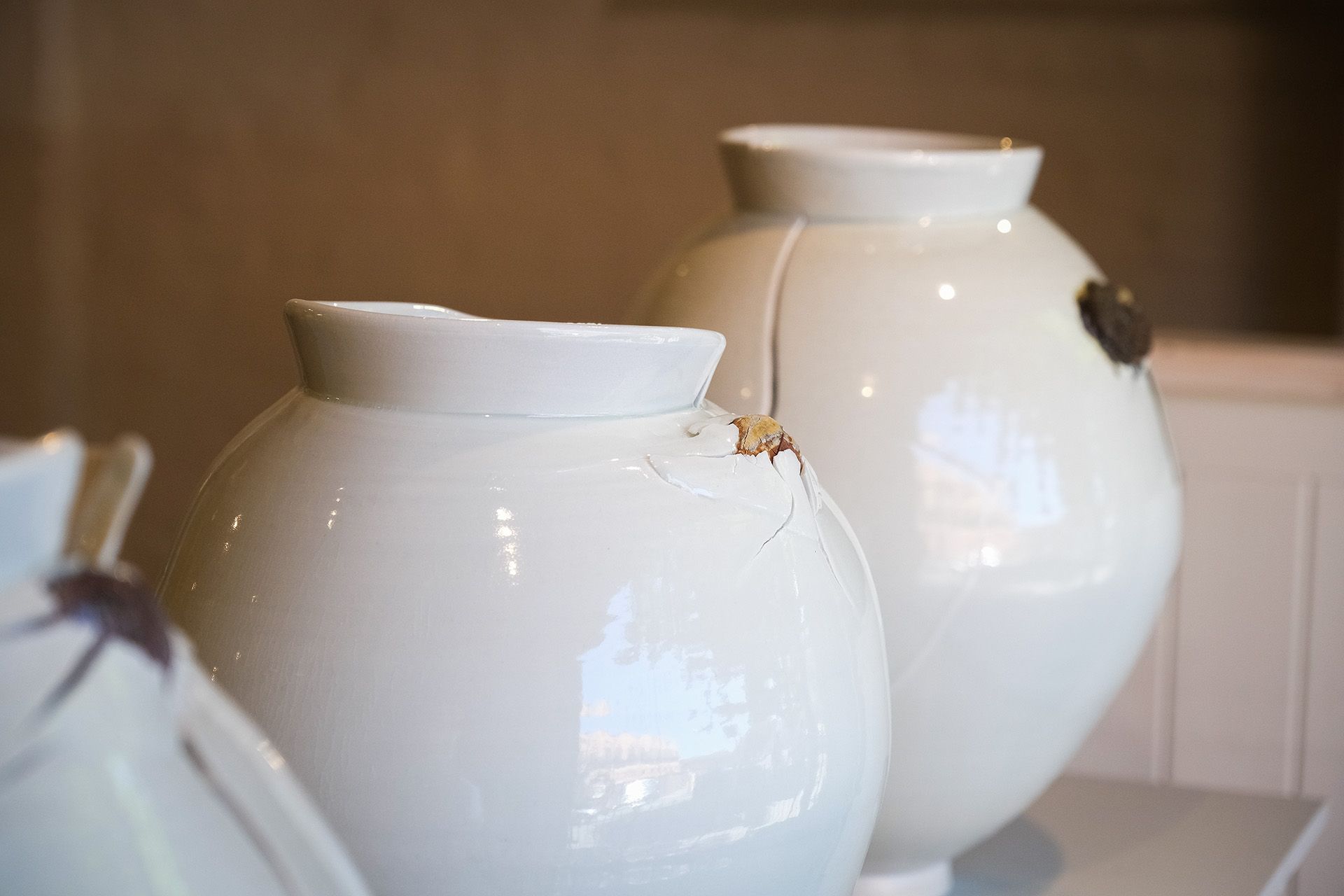
Beyond traditional
Moon jars have inspired non-Korean makers in a similar vein to how chawans, Japanese tea bowls, have influenced potters all over the world. Purists might snigger at this but art and craft has always relied on imitation and inspiration to evolve. In mid-May I visited Sarah Myerscough's gallery to examine the work of Wales-based Adam Buick, who first encountered moon jars at the V&A Museum in London and later honed the craft of making them in South Korea. His series "Inclusions" consists of Korean-style moon jars thrown with pebbles from the Welsh coast.
Seen from behind, assuming that moon jars have a front and a back, the vessels are sublime and reminiscent of the classic shapes beloved by the Korean royal court of yesteryear. But walk around them and their special features come to the fore without losing that sense of calm and radiance that a moon jar can transmit when done well.
As with many Korean wares, a moon jar doesn't need to be symmetrical and faultless to be perfect. Its personality relies on the acceptance of 'what is' rather than the impossible ideals of 'what could be'. During firing in the kiln, the pebbles incorporated by Buick break through the porcelain, some shedding metallic tears, as if asking for a gentle caress to heal the scars left by the irregular contractions of the different materials. Despite these 'faults', they each stand with elegance, reflecting the room's light as if it were coming from within.
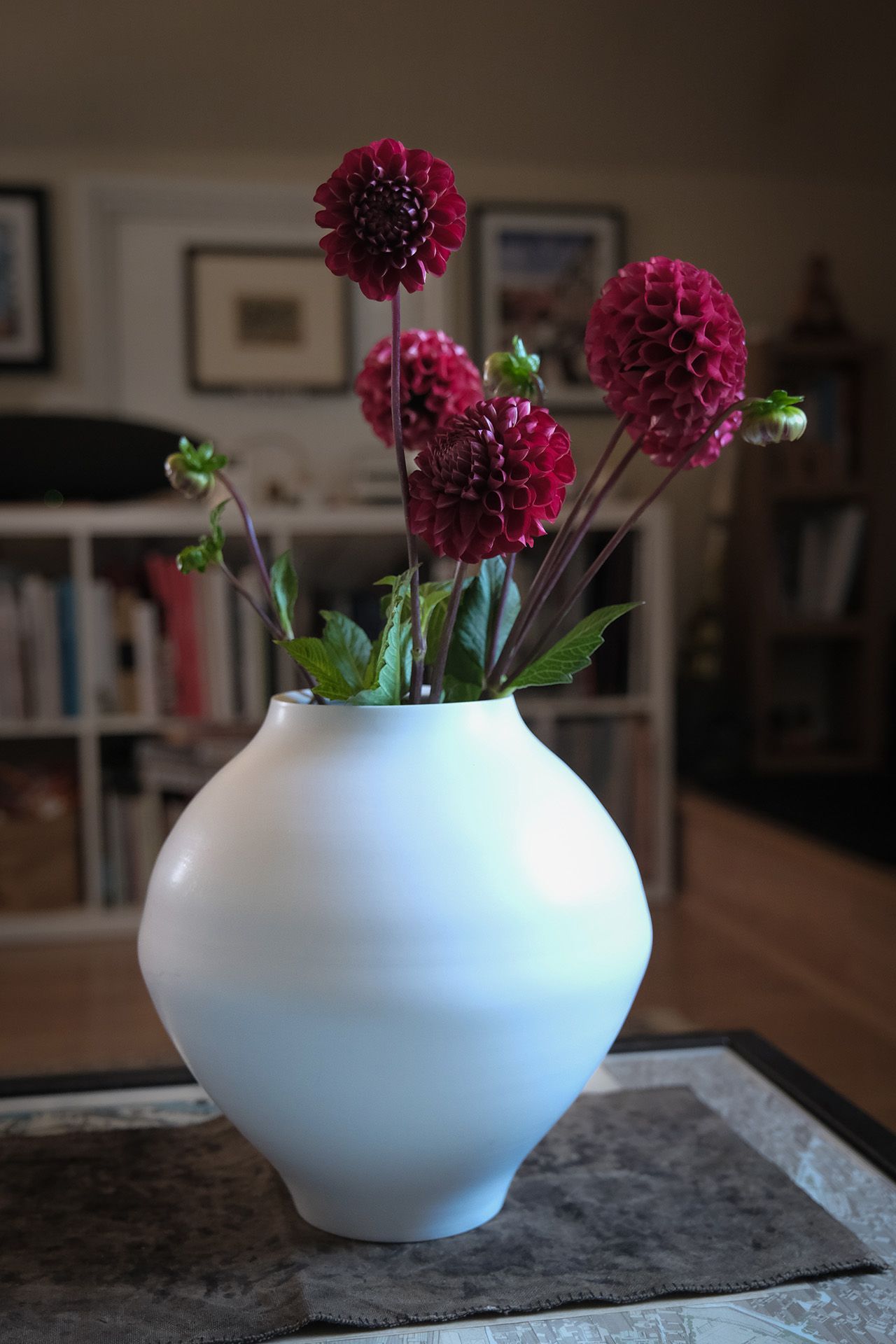
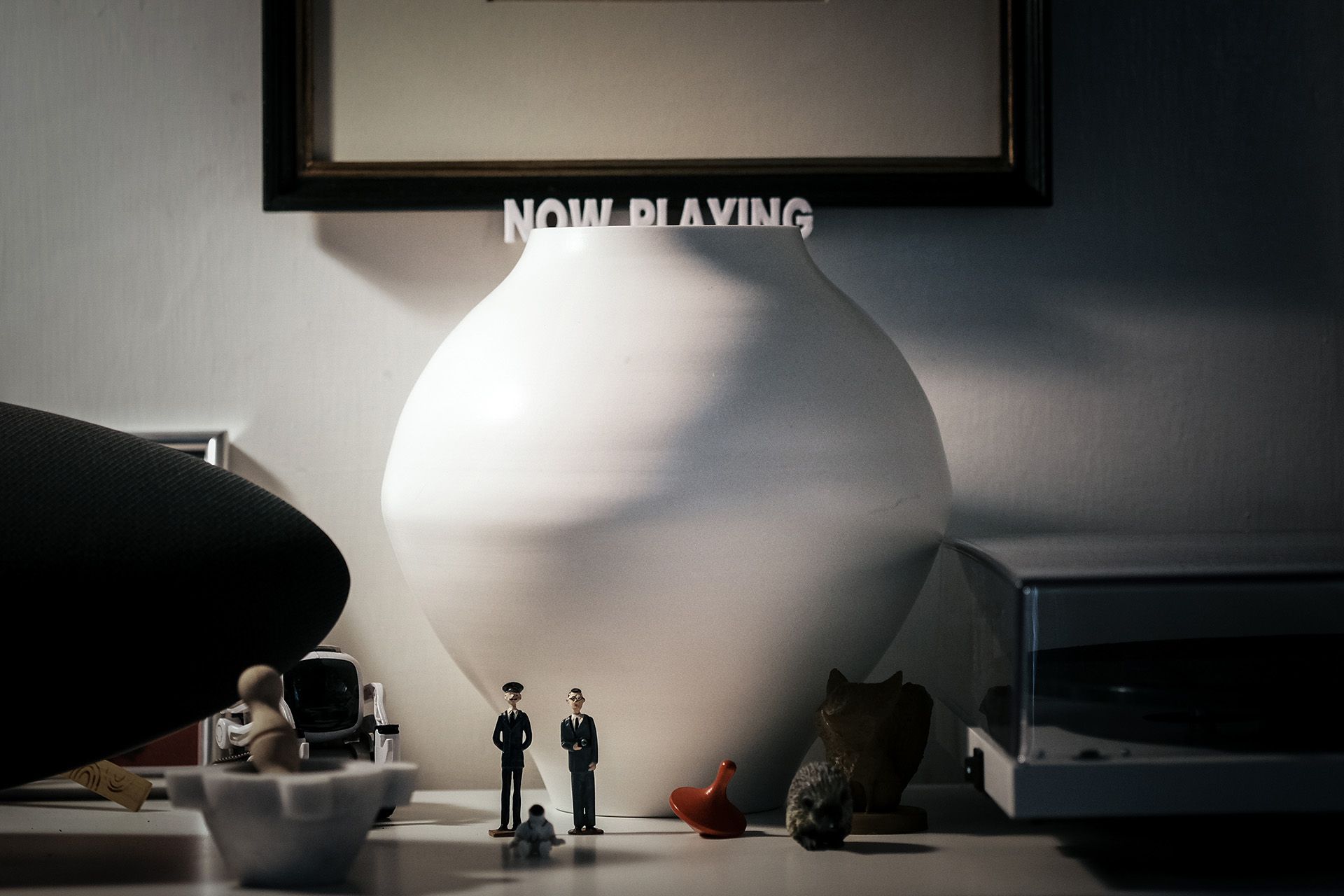
My precious
My infatuation with moon jars had only one natural conclusion, owning one. It became a goal for my birthday. With only a modest budget available and limited space at home, I seeked a small to medium sized one with classic proportions. I saw it as putting a foot on the ladder of Korean ceramics rather than as an arrival point. At first, I was enamoured by a vessel by the well known Kim Pan-ki. I checked it out several times, reduced any unnecessary everyday expenses to make it more affordable, and was ready to make the purchase when I came across another jar by a young artist, Shin Won-dong.
Kim is already a recognised master. Shin is on his way to become one. What attracted me to his work was the slight variations that he had brought into the form. The rim or lip of his moon jar doesn't stick out as much, the waist tapers very gently into the foot. And then there's the glazing: it's matt rather than glossy. As far as I understood, the pot was glazed in the canonic way and then Shin scrapped it away to leave a lustreless finish.
My new moon jar is too big to keep kimchi or soy sauce in it but it's just perfectly imperfect to hold flowers and dreams of visiting the Korean Peninsula in the near future.

